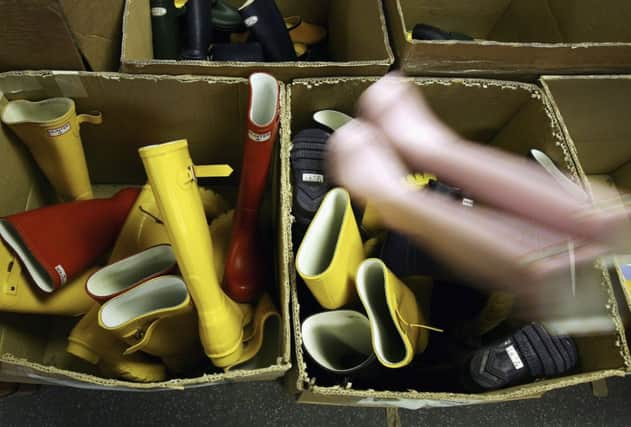Hunter wellies get re-boot at London fashion week


Now Hunter wellies, which became the must-have accessory for “Yuppies” in the 1980s, are about to strut their way into the glamorous world of fashion.
The boots will be an unlikely sight on the catwalk at London fashion week later this month.
Advertisement
Hide AdModels will be wearing a new “bespoke” version of Hunter’s original boots, and completing the rural look with a “water-resistant original clear smock”, also made by the company, as part of its autumn-winter 2014 range.
Alasdhair Willis, creative director of Hunter Boot, says the wellingtons deserve their place in the show, which he hopes will give them a global appeal.
“We have always maintained that a unique opportunity exists to develop Hunter from a British heritage brand into a global lifestyle brand,” he said.
The move will see the boots going toe-to-toe with other British clothing brands such as Burberry, Barbour and Mulberry, which have shaken off somewhat dowdy reputations to reinvent themselves as successful fashion brands worn by affluent people around the world.
Hunter’s chances of success are bolstered by strong links to the fashion world. Mr Willis is half of a fashion power couple – his wife is designer Stella McCartney – while the firm’s global design director, Niall Sloan, was previously a designer at Burberry.
It also has financial firepower, after US private equity firm Searchlight bought a stake in the business in 2012.
Advertisement
Hide AdThe company, originally called the North British Rubber Company, was founded in Edinburgh in 1856 by American entrepreneur Henry Lee Norris. Its manufacturing operation expanded rapidly when, following the outbreak of the First World War, it was asked to “construct a sturdy boot suitable for the conditions in flooded trenches”.
Boasting royal warrants from the Queen and Duke of Edinburgh, the brand has long been a favourite with the home-counties green-welly brigade, but more recently became linked with celebrities, particularly after supermodel Kate Moss rocked up to Glastonbury in 2005 in a pair of Hunter wellies and denim hotpants.
Advertisement
Hide AdSince then, the boots have received a boost from the likes of Sarah Jessica Parker and the Olsen Twins, meaning they are now as likely to be seen in Manhattan as Sandringham.
However, business has not always been a walk in the park for Hunter. High manufacturing costs were blamed for a collapse into administration in 2006, and two years later, once the company had been bought out of administration as Hunter Boot Ltd, it called time on production in Scotland with the closure of its plant at Heathhall, near Dumfries. It relocated it headquarters to Edinburgh and shifted production to China. In 2012, turn-over was almost £75 million.
Mr Willis said: “Hunter was born out of a passion to innovate, advances in manufacturing techniques and a British thirst for discovery. The vision for the brand is to celebrate that pioneering spirit and its rich heritage, making it relevant for today’s customer.”
International fashion shows are usually reserved for designer brands such as Dior, Chanel and Givenchy, but in recent years ambitious high street brands have started to take advantage of these high profile events.
Dhani Mau, of Fashionista.com, said: “Last year, Whistles, run by former Topshop boss Jane Shepherdson, took the plunge by hosting its first invite-only seated show at London fashion week. Commercial brands like Hunter and Whistles have a lot of potential reasons for showing during fashion week, despite not quite fitting in with the ‘designers’ we expect to see there.”
“One is the validation that potentially comes with being associated with an event like New York or London fashion week. Another is that it puts the designer on an international stage, giving brands the opportunity to present to press and buyers from across the globe.”
Best foot forward for Edinburgh firm
Advertisement
Hide AdIn 1856, the North British Rubber Company consisted of only four people, which expanded to a team of more than 600 after 20 years.
With the arrival of the First World War, the company found itself drastically increasing its production of wellington boots. This was at the request of a War Office that required a boot sturdy enough to cope with flooded trenches. It ordered more than a million pairs.
Advertisement
Hide AdHunter was also busy in the Second World War, once more producing high quantities of boots, as well as life belts, gas masks and ground sheets.
In winter 1955, the famous green wellington – the firm’s first orthopaedic boot – appeared. It was a big success, remaining in production to this day – as does the Royal Hunter that was launched alongside it.
Hunter was awarded a royal warrant from the Duke of Edinburgh in 1977, and the Queen in 1986. The firm has grown recently and its products now sell in more than 30 countries.